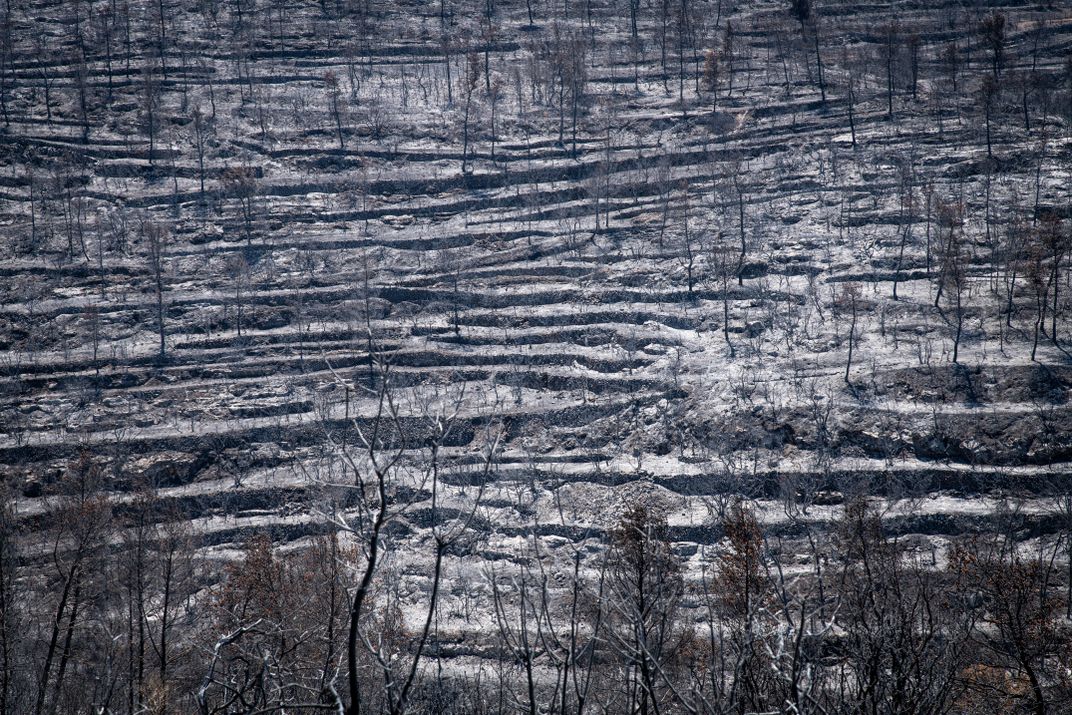Agricultural terraces slope of Beit Umm-el Mis and Deir Amr’, Palestinian villages that were destroyed on 48’ Naqba - exposed by the massive forest wildfire in Jerusalem mountains for the first time since 1951. In August 2021, after a long and hot summer affected by global warming, a massive wildfire had spread in the Jerusalem mountains. The fire had consumed 14,000 Dunams of the Pine Forest of the Martyrs, planted in 1951 in memory of the six million Jews who died in the Holocaust. Pine forests were vastly planted in Israel's early days while conquering the arid landscape. Many Palestinian villages destroyed in 48’ are buried below the lush time blanket of the Pine forests. While the terraces were used by Palestinian farmers at 48’, their affiliation remains in dispute by the Israeli academy. Some researchers argue that the majority of terraces in Jerusalem mountains were constructed during the Iron age - associated with the Kingdom of Judah, and therefore are Jewish heritage rather then Palestinian. In contrast, there is archeological evidence that the early usage of terraces within Palestine occurred much earlier - at the Chalcolithic time in the Levant. The ethnographic conflict in Israel is currently taking place on ground at the botanical level. A battle which is a biological reflection of the geopolitical. Who would flourish and occupy the land after the disaster - would it be the tall foreign Pine who spreads its seeds from the crackling acorns? Or would it be the endemic that was hidden beneath the forest roof - the Olive, Fig, Almond, Pomegranate and Arbutus who miraculously started to bloom a few weeks after the fire?
| Date Taken: | 08.2021 |
| Date Uploaded: | 11.2022 |
| Photo Location: | Israel |
| Camera: | NIKON D850 |
| Copyright: | © Matan Golan |


